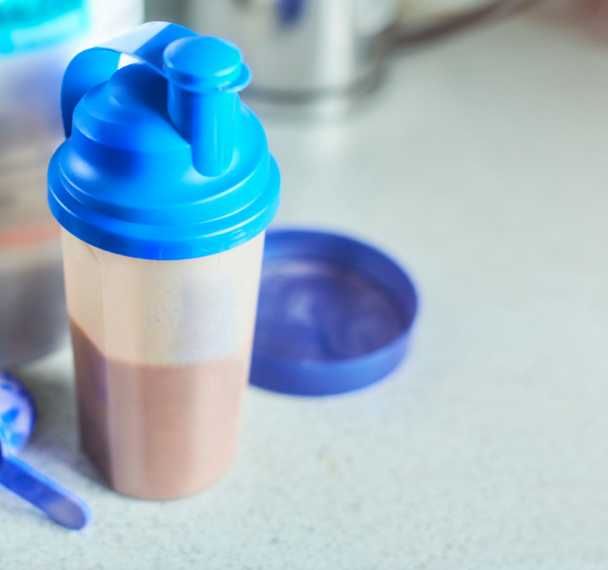The Ultimate Guide to Nutrition and Health Claims for Small Food and Beverage Businesses
Feb 27, 2024
Introduction
If you are a small food & beverage business in the process of creating a product full of nutrients or reduced sugar and calories and you have no idea which claims you can make for your product, keep on reading.
In this blog post, we will show you how to make the right claims for your product and the rules to follow to be compliant with the UK and EU legislations.
Nutrition vs Health claims

There are two types of claims you can make for your product: nutrition claims and health claims.
Nutrition claims
A nutrition claim highlights the positive nutritional aspects of foods and beverages based on the amount of nutrients such as protein, fat, vitamins and minerals but also sugar, salt, fibre and calories.
Here are a some examples of nutrition claims:
🔸Reduced calories
🔸High in protein
🔸Low fat
🔸With no added sugars
🔸High in fibre
🔸Source of calcium
Health claims
A health claim is a statement that mentions how certain foods or beverages can offer health benefits. These claims show the connection between nutrients, or some food category and our health.
Here are a few examples of health claims:
🔸Vitamin A contributes to the normal function of the immune system
🔸Magnesium contributes to the reduction of tiredness and fatigue
🔸Olive oil polyphenols contribute to the protection of blood lipids from oxidative stress
The only prebiotic health claim allowed is with native chicory inulin. And only a small range of health claims relating to dietary fibres have been authorised, including oat grain and rye fibre.
Finally, there are no authorised health claims relating to generic food categories such as fruits and vegetables, dairy or animal products or certain nutrients such as amino acids.
Who decides nutrition and health claims?
Only approved nutrition and health claims from the relevant country regulations can be used and only if the product meets the specific conditions for that claim.
The European Food Safety Authority (EFSA) and UK Nutrition and Health Claims Committee (UKNCC) are responsible for evaluating and authorising claims in the EU and UK respectively.
This ensures that the claims you can use on your products are scientifically based and not misleading for consumers.
The nutrition and health claim registers provide a comprehensive list of approved claims, along with their associated conditions and scientific references.
Claims that were not approved are clearly marked as non-authorised.
If you intend to sell your product in the European market, only use claims from the European register. Similarly, if you're selling in the UK, only use claims from the Great Britain register.
On hold botanical claims
Some claims around generic and botanical substances such as caffeine and ashwagandha, have been submitted for assessment by European and British authorities.
The purpose is to scientifically evaluate their impact on our health, as well as their potential side effects and recommended maximum levels.
The claims labelled as "on hold" can be used until a decision is made by the respective authorities.
These claims should be scientifically based, and businesses using them must be capable of justifying their use.
To use an "on hold" claim, you must use the same substance or plant components, the same quantity, and the same wording as the original "on hold" claim.
For instance, stating that ashwagandha has adaptogenic properties is an "on hold" claim.
Just in case, double check if that “on hold” claim is not in the nutrition and health claim registers, especially in the “non authorised” section.
6 rules to bear in mind

6 main rules to remember regarding nutrition and health claims
How to use the registers
Generic Nutrition claims
Most nutrition claims are straightforward with specific amounts that have to be contained in your final product.
For instance, if you want to use the “high in fibre” claim, your final product has to contain at least 6 g of fibre per 100 g of product or at least 3 g of fibre per 100 kcal.
🔸So for 250g of food or beverage, you need at least 15g of fibre in the final product to use that claim.
Vitamins and minerals nutrition claims
For vitamins and minerals, it is a little bit more complicated.
To use the claim “Source" of a vitamin or mineral, at least a significant amount of that vitamin or mineral must be contained in your final product.
To calculate that significant amount you have to refer to the daily reference intake (RI) also called nutrient reference values (NRVs) for vitamins and minerals.

How to calculate Vitamins and minerals significant amount
As Illustrated on the graph above:
1. Your product contains 1 single portion: to reach that significant amount, the vitamin or mineral must count for a minimum of 15% of the reference intake per portion. This applies to food and beverages.
2. Your product contains multiple portions and the recommended serving size is less than 100g or 100ml: the vitamin or mineral must count for a minimum of 15% of the reference intake per portion. This applies to food and beverages.
3. Your product is classified as a food and contains multiple portions with either a recommended serving size above 100g or 100ml or no service size: the vitamin or mineral must count for a minimum of 15% of the reference intake per 100g/ml.
4. Your product is classified as a beverage and contains multiple portions with either a recommended serving size above 100ml, or no service size: the vitamin or mineral must count for a minimum of 7.5% of the reference intake per 100ml.
Examples
For example, you want to claim "Source of Vitamin C". The daily reference intake of Vitamin C for an adult is 80mg/day.

Examples to claim "Source of Vitamin C"
To use the claim “High in a vitamin or mineral” the product must contain at least twice the significant amount from “Source of vitamin or mineral”
Health claims
Now that you understand nutrition claims, let’s have a look at health claims.
Most of the health claims actually refer to the nutrition claims.
Let’s take our Vitamin C for example. If you want to claim that "Vitamin C contributes to the normal function of the immune system", your product must contain at least a “source of Vitamin C” . Sounds familiar?
So now you have the tools to calculate nutrition and health claims.
There are of course some exceptions, so refer to the appropriate register.
What about nutrition labelling?

When a claim is made for mandatory substances (such as fat, sugars or protein), or supplementary substances (such as fibre, vitamin and minerals), nutrition labelling on packaging is mandatory.
You must declare the substance name and amount in the nutrition table. For vitamins and minerals, you also have to provide the % of the daily Reference Intake.
For specific substances that don’t fit in these 2 categories, such as Omega-3, you must declare them and their amount in the same field of vision as the nutrition labelling.
Conclusion
In this blog post, we have covered the distinctions between a nutrition claim and a health claim, the use of the EU and UK registers, how to calculate the right amount of nutrient present in your final product to support the claim, and rules to follow to ensure your product complies with food legislation.
If you have any questions, or if you need any help navigating the torturous world of food legislation, contact us here. We will be happy to help!
Link to related blogs you may enjoy
🔶 A Journey of Flavours: How a London Food Safari Will Broaden Your Culinary Horizons
🔶 How Fermentation Elevates the Flavours of Food & Beverage Products?
🔶 How to Use Our Senses to Create Irresistible Products: The Role of Flavour Perception
🔶 Rapid Sensory Evaluation Techniques for Successful Product Development
References
Vita Foods Insights, EU regulatory update on ashwagandha, 2023 https://www.vitafoodsinsights.com/regulation/eu-regulatory-update-ashwagandha
Great Britain Guidance on nutrition and health claims, https://www.gov.uk/government/publications/nutrition-and-health-claims-guidance-to-compliance-with-regulation-ec-1924-2006-on-nutrition-and-health-claims-made-on-foods
Great Britain Nutrition and health claims (NHC) register, https://www.gov.uk/government/publications/great-britain-nutrition-and-health-claims-nhc-register
Great Britain ‘On hold’ health claims, https://www.gov.uk/government/publications/on-hold-health-claims-on-foods
Great Britain Food information to consumers, Regulation (EU) No 1169/2011, Annexe XIII, Reference intakes, https://www.legislation.gov.uk/eur/2011/1169/annex/XIII
Great Britain Nutrition Labelling Guidance, https://assets.publishing.service.gov.uk/media/5a8010d8e5274a2e87db7a62/Nutrition_Technical_Guidance.pdf
Health claims flexibility of wording guideline, https://assets.publishing.service.gov.uk/government/uploads/system/uploads/attachment_data/file/213308/health-claims-flexibility-of-wording-principles-UK-19-Dec-2012.pdf
EU Guidance on nutrition and health claims, https://food.ec.europa.eu/safety/labelling-and-nutrition/nutrition-and-health-claims_en
EU Register of Health Claims, https://ec.europa.eu/food/food-feed-portal/screen/health-claims/eu-register
EU Register of Nutrition Claims, https://food.ec.europa.eu/safety/labelling-and-nutrition/nutrition-and-health-claims/nutrition-claims_en
Claims not in the EU Register, https://food.ec.europa.eu/safety/labelling-and-nutrition/nutrition-and-health-claims/eu-register-health-claims_en
EU Nutrition Declaration on packaging, https://europa.eu/youreurope/business/product-requirements/food-labelling/nutrition-declaration/index_en.htm
EU Food information to consumers, Regulation (EU) No 1169/2011, Annexe XIII, Reference intakes, https://eur-lex.europa.eu/LexUriServ/LexUriServ.do?uri=OJ:L:2011:304:0018:0063:en:PDF








